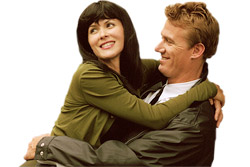

Intercorrelations and correlations with various sexual behaviors varied by group. Heterosexual men and women were more likely than homosexual men to report increased desire when in a positive mood. Among other findings, heterosexual women were less likely than heterosexual and homosexual men to experience increased sexual desire and arousal when anxious or stressed, whereas homosexual men and heterosexual women were less likely than heterosexual men to experience increased desire when sad or depressed. Considerable variability was found in how moods influence sexual desire and arousal, in the effects of mood on sexual behavior, and in the reciprocal effects of sexual activity on mood. An exploratory factor analysis in a sample of heterosexual men, homosexual men, and heterosexual women (N = 1983) produced 8 factors.

This paper presents the development and factor structure of the Revised Mood and Sexuality Questionnaire (MSQ-R). However, the MSQ does not address differences between desire for solo or partnered sexual activity, examine the effects of sexual activity on mood, or assess the effects of positive mood. Previous research using the Mood and Sexuality Questionnaire (MSQ) has revealed substantial variability in how negative mood impacts sexual response and behavior.


 0 kommentar(er)
0 kommentar(er)
